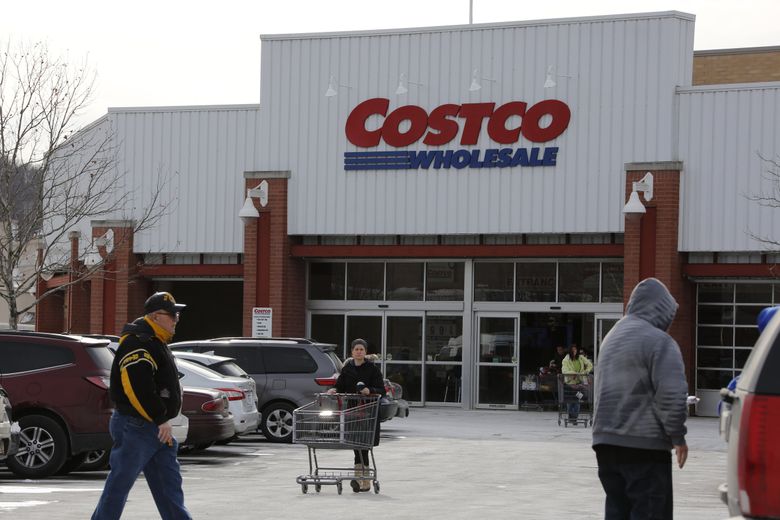I had planned to wrap up my supply chain predictions series this week with some additional prognostications from the analyst at Gartner and IDC, but the major news late last week about Amazon’s apparent real entry into the parcel delivery market has caused me to delay that planned column in favor of this more pressing development.
That column came after news that Amazon had just leased 20 cargo planes for unclear purposes, as it was testing some cargo flights out of the old Airborne Express terminal in Wilmington, OH.
Bloomberg had also reported that “A 2013 report to Amazon’s senior management team proposed an aggressive global expansion of the company’s Fulfillment by Amazon (FBA) service, which provides storage, packing and shipping for independent merchants selling products on the company’s website,” Bloomberg reported. “The report envisioned a global delivery network that controls the flow of goods from factories in China and India to customer doorsteps in Atlanta, New York and London.”
The project’s name: Dragon Boat – and it was said then to be proceeding apace.
“Amazon wants to bypass these brokers, amassing inventory from thousands of merchants around the world and then buying space on trucks, planes and ships at reduced rates,” Bloomberg said. “Merchants will be able to book cargo space on-line or via mobile devices, creating what Amazon described as a ‘one click-ship for seamless international trade and shipping.'”
Around the same time, Amazon received a license to act as a wholesaler for ocean container shipping from the US Federal Maritime Commission and a similar license from the Chinese Ministry of Commerce.
Consistent with that, as a I reported at the time, a senior executive at a major freight forwarder told me at a Fall 2017 retail industry conference that Amazon already brings in about 60-80,000 containers from offshore into the US right now, and that this number could grow to some 250,000 in five years, likely pushing Amazon past Walmart as the largest container importer.
Many of Amazon’s recent moves, he said, are simply due to its insatiable search for more capacity, as it is strained almost everywhere with its still mid-20 percentage growth in merchandise sales.
That executive did not expect, however, that Amazon will actually get into the global logistics business directly, because the returns on such an investment would be very low compared to what Amazon can get from say building more fulfillment and sorting centers around the globe.
But what he does expect is that Amazon will put together a complete, end-to-end global logistics service that manufacturers and merchants around the globe will be able to leverage to ship goods cheaply and quickly from their locations to consumers in the US and Europe. So, it would indeed be an offshoot of Fulfilled by Amazon, in an “asset light” model.
But Amazon may have a more direct strategy for US parcel shipping. Early last year, it announced of plans for a major $1.5-2.0 billion air shipping hub at the Cincinnati airport, with more than 200 flight departures and landings per day to be scheduled. Amazon then denied it plans to enter parcel in a big way, saying facility was being built just to help meet peak demand requirements.
My reaction: who on earth would spend $2 billion on a facility and still more on planes, etc., that would only be used occasionally, in peak periods. My answer: no one, even spend-happy Amazon.
So last Friday, the Wall Street Journal reports that in a few weeks, starting with the Los Angeles area, Amazon will launch new program called Shipping with Amazon (SWA), in which Amazon will take direct control of shipping for its Marketplace sellers in the area, in which it will pick-up packages at those company’s facilities, get them into its network, and in some cases take those parcels all the way to consumers’ homes.
It is similar to, but different from, another service Amazon announced in 2017 called FBA Onsite. With this, Amazon will again take shipments from its third-party Marketplace sellers into its network, but only to leverage its volumes and scale using traditional carriers such as FedEx, UPS and the USPS for last mile delivery. The theory was that scale gives Amazon more options for the shipper in terms of cost and delivery times, and enable more Marketplace orders to participate in the Amazon Prime program that offers free two-day shipping for a set fee per year.
The SWA program takes that program ever further, with Amazon not just taking the shipment into its network, but taking care of final deliveries where it can. It turns out that Amazon already performs some last mile delivery in close to 40 markets. It is assumed it will take care of last-mile delivery in those areas, filling up its trucks and providing higher delivery “density,” the key factor in cost per delivery.
In other markets, it appears Amazon will often get packages close, say via truckload carriers or air, and then use the traditional carriers for the last mile.
Now, of course, the purpose of the hub under construction in northern Kentucky makes a lot more sense.
 The Wall Street Journal reported that while the program is being piloted with the company’s third-party sellers, Amazon envisions eventually accommodating other businesses and that Amazon plans to undercut UPS and FedEx on pricing,
Wow. There are two key questions: (1) Can it work?; and (2) What does it mean if it can?
As always in such situations, I turned to our friend Jerry Hempstead, a former DHL executive and now parcel shipping consultant, for his insights.
“I don’t think it’s a threat to FedEx or UPS,” Hemptead told me. “The parcel world does not revolve around nor depend on the deliveries of sweaters to your favorite nephew or niece.”
He says that while Amazon is a huge fulfillment business it’s just a fraction of the world that UPS and FedEx operate in, noting that the core business of the carriers is actually B2B, not B2C, and by a large margin.
“My take on what Amazon is up to is to gain greater routing control over transactions coming from its suppliers and to reduce handling costs and a leg of transit when orders can originate from a supplier rather than transiting from an Amazon DC,” Hempstead adds. “The shipments will appear as if they come from Amazon but will actually drop ship directly from the supplier.”
This is “surgical” and “not some threat on the vast amorphous market served by FedEx and UPS,” Hempstead says, adding “The articles last week are way ahead of reality and the press (and Wall Street) made way too much of this.”
As UPS and FedEx have been saying for years, Amazon’s ability to one day haul and deliver packages for other retailers and consumers at a national scale would require tens of billions of dollars, requiring thousands of trucks, hundreds of planes and to build many sorting centers to handle millions of packages a day.
I agree generally, but have a slightly different take. While B2B may dwarf B2C at the moment, B2C is growing 15% per year, far faster than B2B. It inevitably will become a bigger factor in the mix.
Second, Amazon is taking the long view – a building options.
Third, the obvious strategy to me is for Amazon to take over the highest volume lanes – and let UPS/FedEx/UPSPS handle last mile in say Montana.
This point was also made earlier this year by our friend John Larkin of Stifel, who wrote that the fear on the part of carriers is that the company Amazon will skim off the base load volume and leave the end of week, end of month, end of quarter, and/or holiday surges to its outside service providers – who are investing heavily in their own networks on the premise that “base load volume will cover fixed costs and that the surges will afford the opportunity to make a profit.”
How this plays out should be fascinating and high stakes for Amazon and the carriers. I think it is great for Amazon to continue to compete on logistics – which many thought had become a commodity function before ecommerce and Amazon.
| 
 The Wall Street Journal reported that while the program is being piloted with the company’s third-party sellers, Amazon envisions eventually accommodating other businesses and that Amazon plans to undercut UPS and FedEx on pricing,
The Wall Street Journal reported that while the program is being piloted with the company’s third-party sellers, Amazon envisions eventually accommodating other businesses and that Amazon plans to undercut UPS and FedEx on pricing,



